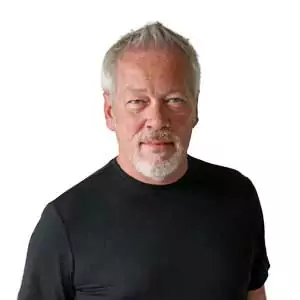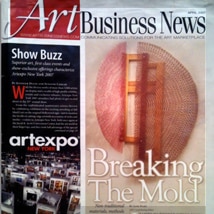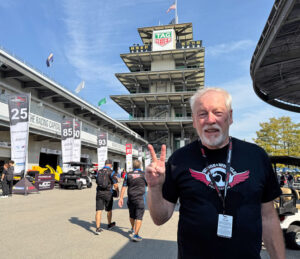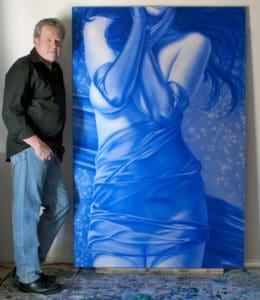“Breaker Breaker One-Nine. You got a copy on me, good buddy?”
I’m sure I’m dating myself by even admitting first-hand knowledge of the Citizens Band radio era. But, like some of you reading this, I was there. My father was an avid CB fanatic. In more ways than not, it was the Twitter of his day.
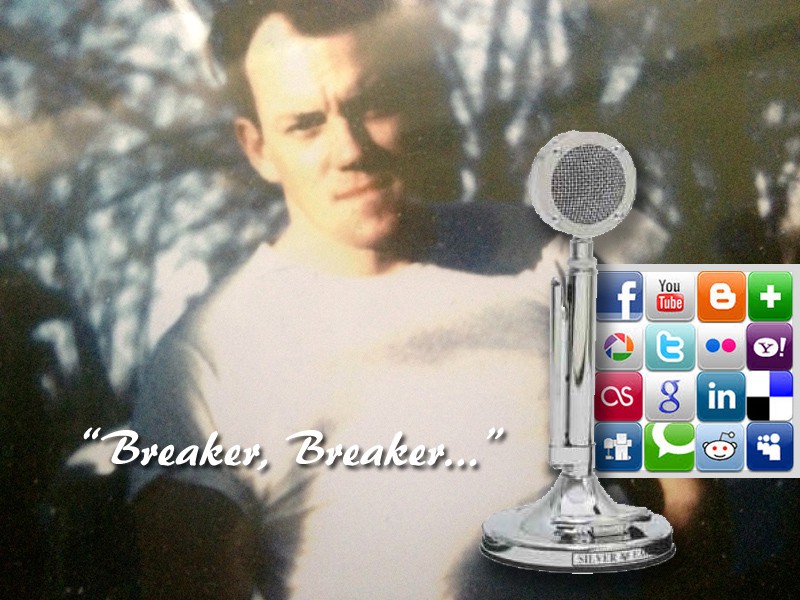
Wayne Cook, Sr., aka “Red Road Runner”
When the Internet started or started to take off anyway, a friend of mine often said, “Internet — CB of the nineties.” Of course, he was joking to some degree. He knew the Internet was about to explode. And ironically, he had more computers and technology than most anyone I knew. But he wasn’t all that fond of the Internet per se. To my knowledge, he’s still not. But maybe, in retrospect, in some ways, he was more correct about the Internet+CB connection than I realized at the time.
There are actually a few similarities between the CB (Citizens Band) radio of the 1970s and the Social Media of today. With a microphone in hand, you created friends and reasons to get together (remember CB jamborees and campgrounds populated with pickups with long whip antennas?). Then, you stayed in touch with one another so that you could create more reasons to get together (bigger CB jamborees?). Then, after you went to the Jamboree or whatever event de jour, you got on the CB and told everybody you went. Of course, you’d discuss other things too. But whatever you talked about, it was an open discussion. You were pretty much Blogging before Blogging was Blogging. Your thoughts were open to the world. Anyone within the listening range could be part of the conversation. Even if they didn’t chime in, often they’d listen – like hearing the background sound in a radio reality show. Virtual eavesdropping.
We all had CB “handles” or aliases. Dad was “Red Road Runner,” sometimes aka “Triple R.” Today, that would be Twitter/RedRoadRunner74. Mom was “Wild Coyote,” and I was “CB Artist.” My brother and sister each had their handles, too. We all had handles, and so did most of my dad’s friends, and I’m pretty sure their friends did, too. It was like having an email address today. As a young artist, I enjoyed drawing their QSL Cards, essentially postcards, about 6″ x 9″, that CBers would exchange with others they wanted to keep in touch with. QSL cards had the usual information: your handle, the frequency you are most likely to be found – usually a couple out of the available 40 (channels 19 and 23, for example), city, state, and any other pertinent info (whatever that might be). Usually, they were quite creative. Some were photo halftones or a picture that meant something to them (like Instagram but with only one picture). Others wanted drawings or cartoons. The QSL Card was an expression of their handle – their personality. I drew lots of them for my dad’s friends and CBers at Jamborees. I learned early on to always carry a drawing pad everywhere I went. I was probably between 10-13 years old when that whole thing was happening. I did $10 hand-drawn QSL cards. Back then, $10 was good money for a young artist to draw stuff out of my head. It was fun.
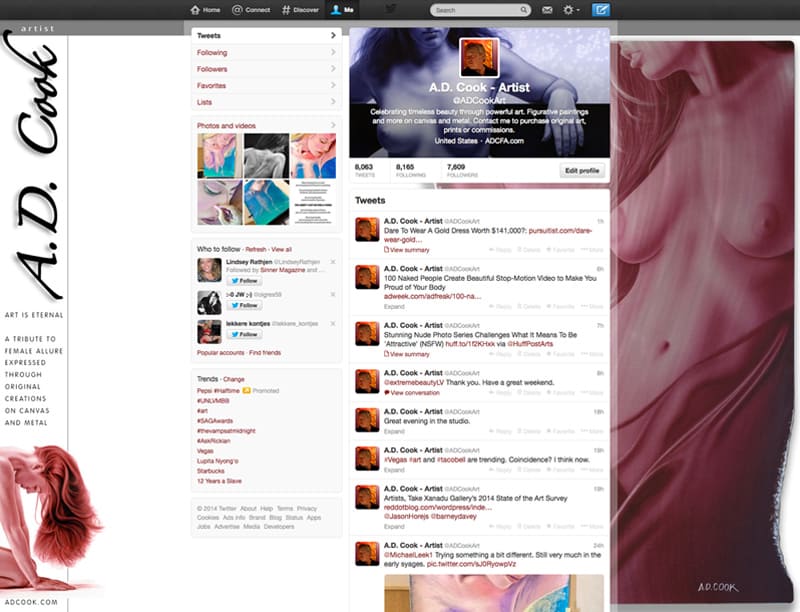
Twitter/ADCookArt Screenshot ~ 01/18/14
From a cultural perspective, today’s Social Media has a lot of similarities with CB radio of the ’70s. In connecting with each other, we’re making new friends while reconnecting with old friends and loved ones. We get together at our “jamborees” or concerts, happy hour, and meet-ups along the way. Along the way, we share our experiences with the world by telling everybody where we’re at or where we were and what we did. Tweet. Blog. Over. Retweet.
Today, we have usernames and online aliases instead of CB handles, but they’re pretty much the same thing, really. JPGs and Twitter background graphics have replaced QSL cards. Business cards now have our social media listed on them, essentially making them small QSL cards. Everything is smaller now, especially the world.
Aside from pictures, video, and advertising, today’s virtual world of communication and chatter is socially similar, except that those things, especially pictures and video, make all the difference. Everything changes with pictures. The ability to share visual content changed everything for the artist and for everyone else really. I especially love social media as an artist, though. Some pictures really are worth a thousand words. Great pictures go well beyond that. And video adds a whole different dynamic to the conversation.
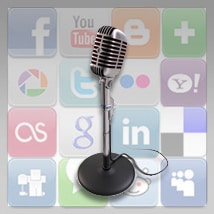
Clearly, it’s become much more than that. In today’s social media world, we have everything from Facebook to Twitter and everything you can imagine in between. I guess I liked that old Citizens Band radio my dad used to talk to his world on. Sometimes, he’d be on that thing for hours. He chatted with different circles of friends, some real and some virtual, on lots of different channels.
![]()
Now, 40 years later, I still enjoy discovering, sharing, and connecting with culture outside my little corner of the world. I also thoroughly enjoy interacting with creative friends and collectors. I’m also somewhat of a geek at heart, having kept ADCook.com live and online since 1996 through its many iterations and technology changes. Over the years, the internet has become a powerful and resourceful place to discover and learn about anything you want and share that with the world. An artist, or just about anyone for that matter, would be negligent in not taking advantage of the fantastic resources available online to communicate with one another.
In the end, it’s really all about us communicating and interacting with one another. It’s about the community. It always gets back to that.
I’m excited to see where it goes from here.
Can I get a big 10-4 on that? Er, I mean… “tweet”?. Cheers!
• • • • •
FIND ME HERE:
Or visit my SOCIAL MEDIA DIRECTORY for a complete listing.
• • • • •
“Citizens Band Radio (also known as CB radio) is, in many countries, a system of short-distance radio communications between individuals on a selection of 40 channels within the 27-MHz (11 m) band. Citizens’ band is distinct from the FRS, GMRS, MURS, and Amateur Radio Service (ham radio). In many countries, CB operation does not require a license, and (unlike Amateur Radio) it may be used for business or personal communications. Like many other two-way radio services, citizens’ band channels are shared by many users. Only one station may transmit at a time; other stations must listen and wait for the shared channel to be available.
A number of countries have created similar radio services with varying technical standards and requirements for licensing. While they may be known by other names, such as the General Radio Service in Canada,[1] they often use similar frequencies (26 to 28 MHz), have similar uses, and similar tech.” ( source: http://en.wikipedia.org/wiki/Citizens_band_radio )
• • • • •
“A QSL card is a written confirmation of either a two-way radio communication between two amateur radio stations or a one-way reception of a signal from an AM radio, FM radio, television, or shortwave broadcasting station. It can also confirm a third-party listener’s reception of two-way radio communication. A typical QSL card is the same size and made from the same material as a typical postcard, and most are sent through the mail as such.
QSL card derived its name from the Q code “QSL.” A Q code message can stand for a statement or a question (when a question mark follows the code). In this case, “QSL?” means “Do you confirm receipt of my transmission?” while “QSL” means “I confirm receipt of your transmission.” ( source: http://en.wikipedia.org/wiki/QSL_card )
• • • • •
Every culture has its language.
Learn to speak CB slang here: http://en.wikipedia.org/wiki/List_of_CB_slang (some of it is actually pretty funny)
CB World has created a more condensed version of the most important CB radio codes – the “10-codes” and “Q-codes.” Get it here: – http://www.wearecb.com/cb-radio-lingo.html
• • • • •
SOCIAL MEDIA DIRECTORY | ART FOR SALE | ARTIST BLOG
- About the Author
- Latest Posts
- More info
A.D. is an artist who started drawing at a young age. Throughout his life, he has worked with different creative tools in traditional and digital art and design. His art and writings have been showcased in various publications such as Airbrush Action Magazine, Airbrush Magazine, American Art Collector, Art & Beyond, Dream To Launch, Easyriders, Las Vegas City Life, Las Vegas Weekly, L’Vegue, ModelsMania, Quick Throttle, and The Ultimate Airbrush Handbook.

